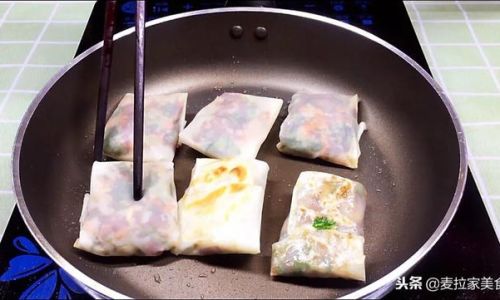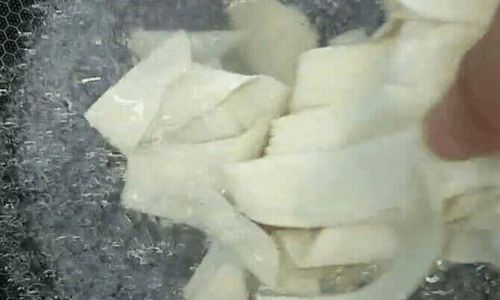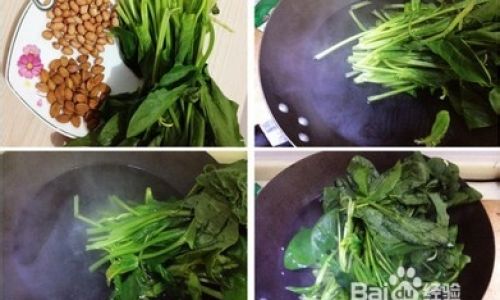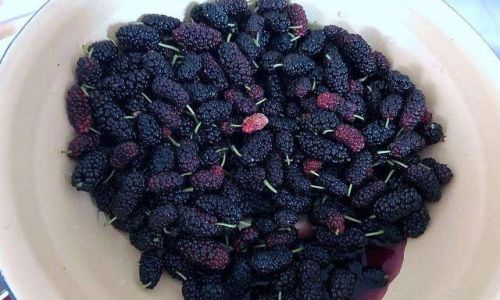Introduction
Dumplings, a staple in many Asian cuisines, are not just a meal; they are a culinary art form that brings families and friends together. Whether served as a hearty appetizer, a comforting main dish, or a festive treat during holidays, dumplings encapsulate the essence of tradition and innovation. Among the myriad variations, tricolor dumpling skins stand out for their vibrant appearance and the delight they bring to the table. These colorful wrappers are not just aesthetically pleasing; they also add a layer of fun and creativity to your dumpling-making experience.
In this comprehensive guide, we’ll walk you through the process of making tricolor dumpling skins from scratch. We’ll cover everything from selecting the right ingredients to achieving the perfect color balance and texture. By the end, you’ll be equipped with the skills to create stunning tricolor dumplings that are sure to impress your guests.
Section 1: Understanding the Basics

Before diving into the specifics of making tricolor dumpling skins, it’s essential to understand the fundamentals of dumpling skin preparation. Traditional dumpling skins are made from wheat flour, water, and sometimes a pinch of salt. The dough is kneaded until smooth and elastic, then rolled out thinly to form the wrappers.
For tricolor dumplings, we’ll incorporate natural food coloring agents to achieve the desired hues. Natural options like spinach juice for green, carrot juice for orange, and beetroot juice for red are not only healthy but also add a subtle, earthy flavor to the dumplings. Alternatively, you can use food coloring gels or powders for more vibrant and consistent colors.
Section 2: Ingredients and Equipment
Ingredients:
- 300 grams of all-purpose flour (divided into three equal parts)
- 1/2 teaspoon of salt (optional, for added flavor and texture)
- About 100 milliliters of water (or as needed)
- 1 small carrot, peeled and grated (for orange dough)
- 1 small beetroot, peeled and grated (for red dough)
- A handful of fresh spinach leaves, blanched and pureed (for green dough)
- Food coloring gels or powders (optional, if using instead of natural juices)
Equipment:
- Mixing bowls (three separate bowls for each color)
- Rolling pin
- Knife or pastry cutter
- Measuring cups and spoons
- Blender or food processor (for pureeing vegetables)
- Clean kitchen towel or plastic wrap (for covering dough while resting)
- Dumpling press or small round cookie cutters (optional, for uniform skin size)
Section 3: Preparing the Dough
Step 1: Make the Basic Dough Mixture
-
Measure and Divide the Flour: Begin by measuring 300 grams of all-purpose flour. Divide this flour into three equal parts, each weighing approximately 100 grams. Place each portion in a separate mixing bowl.
-
Add Salt (Optional): If using salt, add a pinch to each bowl of flour and mix it in gently with a fork or your fingers.
Step 2: Infuse the Dough with Color
-
Prepare the Natural Juices or Purees:
- Orange Dough: Grate a small carrot and squeeze out the juice using a cheesecloth or fine-mesh strainer. You’ll need about 3-4 tablespoons of carrot juice.
- Red Dough: Peel and grate a small beetroot, then squeeze out the juice similarly. Aim for about 3-4 tablespoons of beetroot juice.
- Green Dough: Blanch a handful of fresh spinach leaves in boiling water for a minute, then plunge them into ice water to stop the cooking process. Puree the spinach leaves in a blender until smooth. You may need to add a little water to help with blending, but aim for a thick puree. Use about 3-4 tablespoons of spinach puree.
Alternatively, if using food coloring gels or powders, mix a small amount with water according to the package instructions to create concentrated color solutions.

-
Combine Ingredients:
- For each bowl of flour, create a well in the center and pour in the corresponding juice or puree (carrot juice for orange, beetroot juice for red, spinach puree for green). Gradually add water, starting with about 2-3 tablespoons per bowl, and mix until a shaggy dough forms.
- Knead each dough separately on a lightly floured surface for about 5-7 minutes until it becomes smooth, elastic, and no longer sticky. If the dough is too dry, add a little more water; if too wet, sprinkle with a bit more flour.
Step 3: Rest the Dough
- Cover each dough ball with a clean kitchen towel or plastic wrap to prevent it from drying out. Let the dough rest for at least 20-30 minutes. This resting period allows the gluten in the flour to relax, making the dough easier to roll out without shrinking or tearing.
Section 4: Combining the Doughs
Step 1: Roll Out the Dough
- Once the dough has rested, place each ball on a lightly floured surface and roll it out into a thin sheet, about 1/8-1/4 inch thick. Aim for uniformity in thickness to ensure even cooking.
Step 2: Stack and Roll
-
Stack the rolled-out dough sheets on top of each other, with the colors alternating. Start with one color, followed by another, and then the third, creating a layered stack.
-
Lightly dust the top sheet with flour to prevent sticking, then roll the stacked dough into a log, starting from one short end. Try to keep the roll tight and even, ensuring that the layers remain intact.
-
Wrap the log tightly in plastic wrap and refrigerate it for about 30 minutes to firm up. This will make slicing the dough into individual wrappers easier.
Step 3: Slice and Flatten
-
Remove the chilled dough log from the refrigerator and unwrap it. Using a sharp knife or pastry cutter, slice the log into thin rounds, each about 1/4-1/2 inch thick. The exact thickness is a matter of personal preference; thinner slices will result in more delicate dumpling skins, while thicker slices will be more robust.
-
Gently flatten each slice with your palm or the bottom of a glass to ensure it lies flat and evenly colored. If necessary, use a rolling pin to lightly roll out any uneven spots.
Section 5: Filling and Shaping the Dumplings

Step 1: Prepare Your Filling
- While the dough is resting and being prepared, you can focus on making the filling. Popular choices include ground pork, shrimp, beef, or a vegetarian mix of mushrooms, tofu, and vegetables. Season your filling with soy sauce, ginger, garlic, sesame oil, and other spices to taste.
Step 2: Wrap the Dumplings
- Place the Wrapper: Hold a dumpling skin in the palm of your hand, with the colored side up.
- Add the Filling: Spoon a small amount of filling into the center of the wrapper. Be careful not to overfill, as this can make sealing the dumplings difficult and cause them to burst during cooking.
- Seal the Dumpling: Fold the wrapper in half over the filling, pinching the edges together to seal tightly. You can create pleats for a more decorative finish if desired.
- Ensure Tight Seals: Ensure that all edges are securely sealed to prevent leakage during cooking.
Section 6: Cooking the Dumplings
Step 1: Boiling
- Bring a large pot of water to a rolling boil. Add a small amount of salt to the water (optional, but it helps the dumplings hold their shape and adds flavor).
- Carefully drop the dumplings into the boiling water, being careful not to overcrowd the pot. Cook for about 3-5 minutes, or until the dumplings float to the surface and the skins are translucent.
- Use a slotted spoon to remove the dumplings and let them drain on a paper towel-lined plate.
Step 2: Pan-Frying (Optional)
- For a crispy finish, you can pan-fry the cooked dumplings in a small amount of oil until the bottoms are golden brown. This step adds an extra layer of flavor and texture.
Step 3: Serving
- Serve the dumplings hot with your favorite dipping sauce, such as soy sauce mixed with vinegar, sesame oil, and chopped green onions. You can also add a splash of chili oil or a dollop of hoisin sauce for extra heat or sweetness.
Conclusion
Making tricolor dumpling skins may seem like a daunting task at first, but with patience and practice, you’ll soon master the art. The beauty of this recipe lies in its versatility; you can experiment with different fillings, shapes, and cooking methods to suit your taste and dietary preferences.
Remember, the key to successful dumpling-making is attention to detail and a willingness to embrace the imperfections that make each batch unique. Whether you’re




0 comments